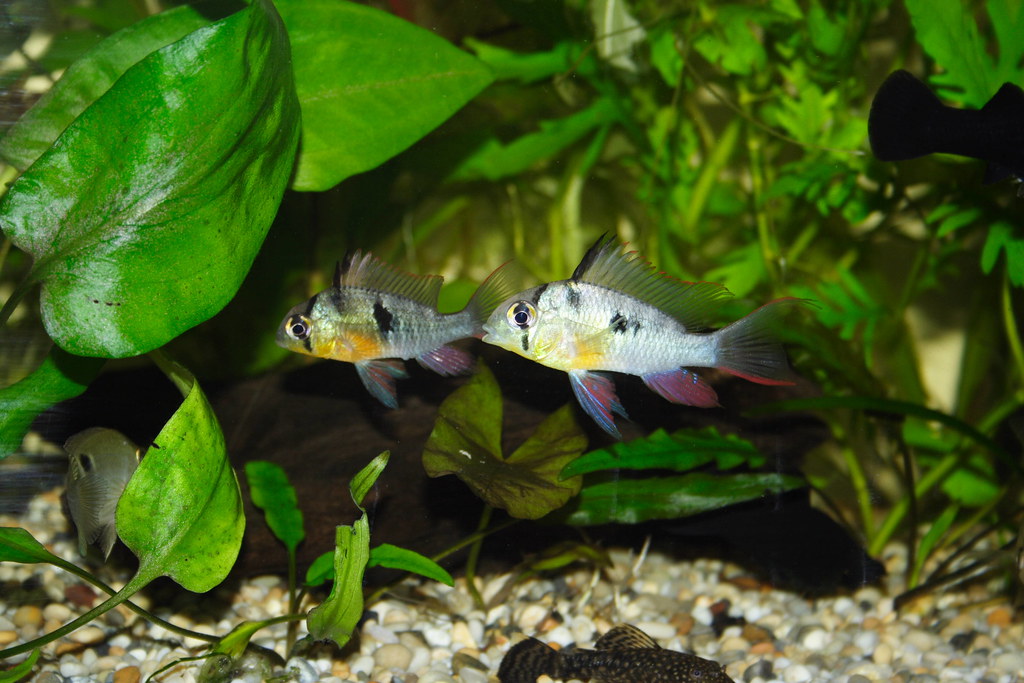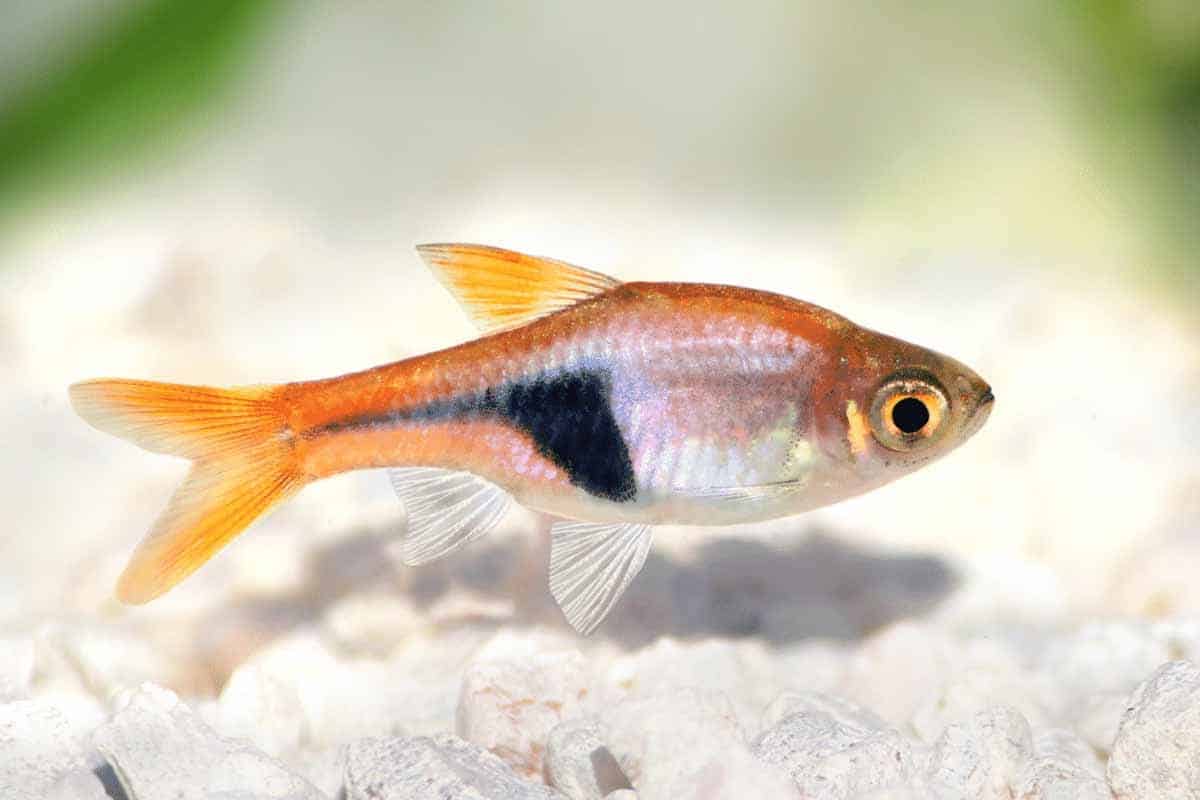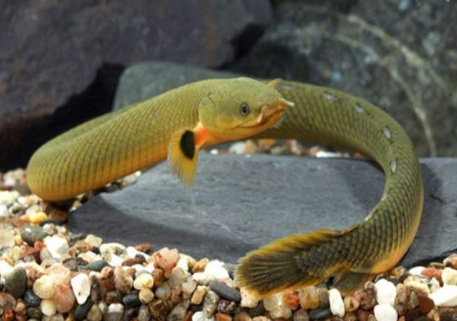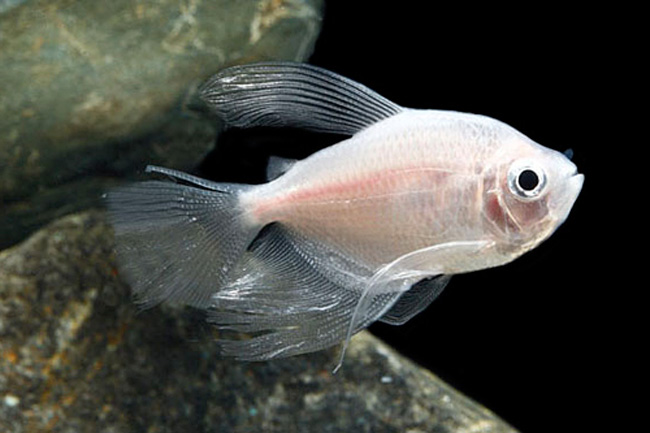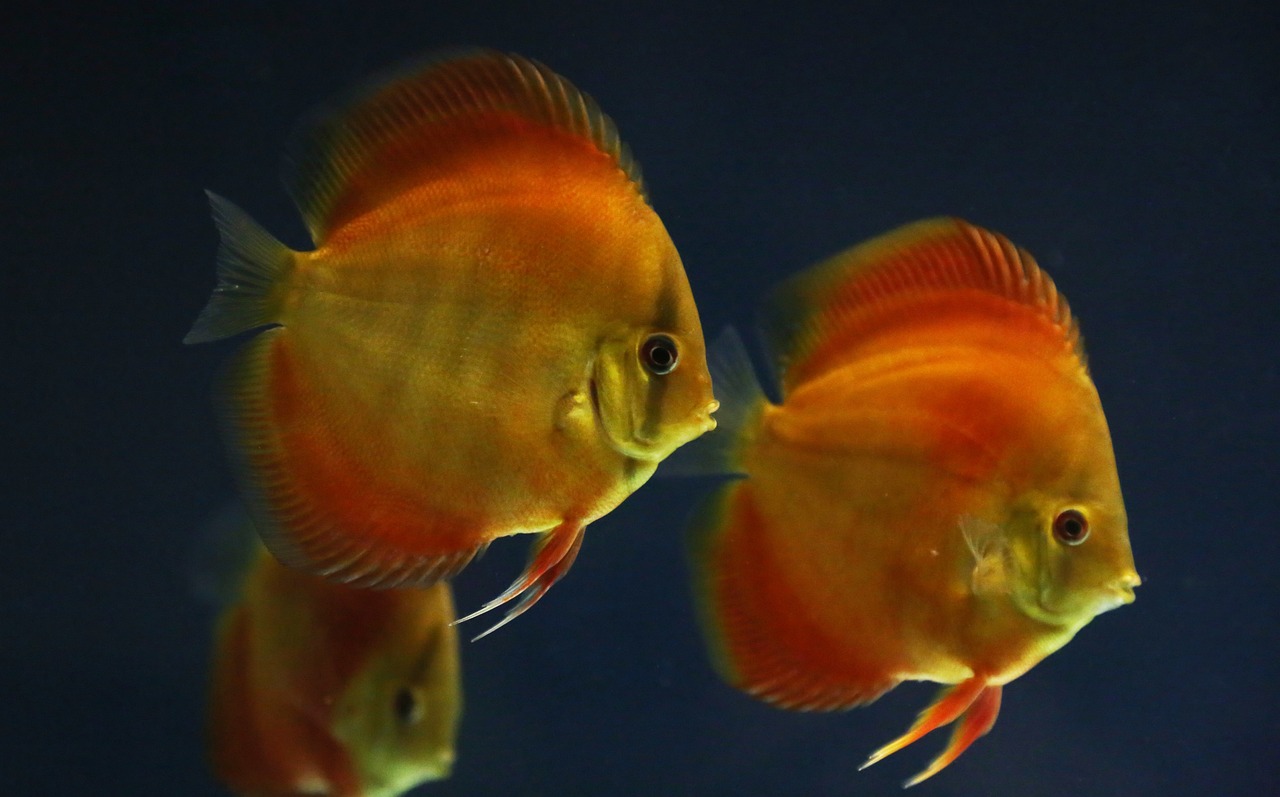Bolivian Ram Breeding: Did you know Bolivian ram fish can lay up to 125 eggs in one go? It shows how much they can breed. As someone who loves fish tanks, I see breeding Bolivian rams as both fun and hard work. Choosing the right conditions lets you see new life in your tank.
Being patient and paying close attention is key to breeding these fish. It might take 5-6 months, but some might see success sooner. The secret is a perfect home for them. A 46-gallon tank with sandy bottom, and the right temperature, 77-79°F, is just what they need to start a family.
I’ve learned that weekly 25% water changes with cooler water can help. It’s also important to keep the water slightly acidic, between 6.8-7.4, for their health and breeding. Stick to these breeding tips, and you could see baby rams in your tank.
Table of Contents
Bolivian Ram Breeding: Key Takeaways
- Bolivian rams can produce up to 125 eggs per spawning
- Successful breeding may take 5-6 months of preparation
- A 46-gallon tank with sandy substrate is ideal for spawning
- Maintain water temperature between 77-79°F
- Weekly 25% water changes with cooler water stimulate breeding
- Keep pH levels between 6.8-7.4 for optimal breeding conditions
Introduction to Bolivian Ram Fish
Bolivian ram fish, known as Microgeophagus altispinosa, are beautiful cichlids. They come from South America. They are loved for their colorful bodies and their unique ways of acting and breeding.
Physical characteristics
These fish are known for their bright colors and elegant fins. They usually reach up to 3 inches in size. This means they can fit in different fish tanks. The males are more colorful and have longer fins than the females.
Natural habitat
In their natural habitat, they live in Bolivia and Brazil’s slow rivers and streams. They like their water a bit soft and not too hard, with a pH level of up to 7.6. This shows they can do well in tanks.
Popularity in aquariums
Many fish lovers enjoy breeding these Bolivian rams because of a few key reasons:
- They can live for 5-8 years, which is longer than many other fish.
- They are not too picky about water quality, unlike their Blue Ram cousins.
- They are calm and fit well with other peaceful fish in a tank.
- The way they breed and interact is very interesting to watch.
With the right care, Bolivian ram fish can do more than just survive in fish tanks. They can bring joy to people at every level of fish keeping through breeding.
Setting Up the Ideal Breeding Tank
Creating the best bolivian ram breeding tank setup is key for spawning success. We’ll look at the important parts needed for a great breeding environment.
Tank Size and Layout
A 46-gallon or bigger tank is best for breeding bolivian rams. It lets them claim areas and is great for spawning. A tank layout that includes hiding places and open spaces is important. It makes the fish feel at home and ready to breed.
Water Parameters
Getting the right water conditions is crucial for breeding success. Here are the water parameters that I’ve found to work well:
| Parameter | Ideal Range |
|---|---|
| pH | 6.6 – 7.6 |
| Temperature | 80°F – 82°F |
| General Hardness (GH) | 4 – 8 dGH |
| Carbonate Hardness (KH) | 2 – 5 dKH |
| Nitrate | Below 20 ppm |
Substrate Choices
Choosing the right substrate is important. I’ve found that sand works well for bolivian ram breeding. It lets the fish search through it and is good for laying eggs. Using fine sand also keeps the water clean by catching waste.
Essential Equipment
For the ideal breeding tank, certain items are essential. I make sure to have these in my setup:
- A well-seeded sponge filter for gentle filtration
- A reliable heater to maintain stable temperatures
- Live or artificial plants for cover and security
- Flat rocks or slate for potential spawning sites
Focusing on these areas will help you create the best environment for your bolivian rams to breed and rear their young.
Selecting and Pairing Bolivian Rams
Finding the right bolivian ram breeding pair is key to successful breeding. I pick mature fish that are at least 3 inches long and look healthy. It’s important to choose ones that are vibrant and lively because these fish can live up to four years.
To see how Bolivian Rams mate, I set up a 29-gallon tank. It has low current and lot of places to hide. I add 6 Bolivian Rams to let them naturally pair off. This is similar to how they meet in the Rio Mamoré and Guaporé basins in the wild.
It might take a while for the Rams to pair up, from a few weeks to several months. I keep an eye out for signs that they’re starting to bond:
- Swimming together
- Defending territory
- Displaying brighter colors
When I see a pair has formed, I take out the others. This helps the breeding pair have a less stressful and more successful time. These normally peaceful fish can get a bit territorial during breeding. So, it’s crucial to provide them with a lot of room.
In my time with these fish, I’ve seen a good pair lay 100-200 eggs per spawn. The eggs usually hatch in 2-3 days, kicking off an exciting breeding phase.
Bolivian Ram Breeding Conditions
Creating the right setup is vital for breeding bolivian rams. I’ll show you the key elements for success in spawning.
Optimal Temperature
Bolivian rams love warm water. Keep it between 80-83°F (26-28°C) for breeding. This creates a habitat similar to their natural one and boosts mating behavior.
pH and Water Hardness
For breeding, provide soft, a bit acidic water. Keep the pH between 6.0 and 6.8. Also, water hardness should be low, under 4 dGH. These conditions match their home in South America well.
Lighting Requirements
Use soft light for spawning. This helps keep them calm and ready to breed. It’s good to have a way to change the light’s brightness over time.
| Parameter | Ideal Range |
|---|---|
| Temperature | 80-83°F (26-28°C) |
| pH | 6.0-6.8 |
| Water Hardness | <4 dGH |
| Lighting | Moderate |
Stable water conditions are critical. Test the water often and filter gently to support breeding and the young fish.
Bolivian Ram Breeding Behavior
I’ve seen some interesting things in my aquarium. Bolivian rams show unique ways of socializing and reproducing. As it nears time to breed, their colors become brighter, making a beautiful show.
During breeding season, male rams get more protective of their space. They keep other fish away. Meanwhile, the females pick their mates carefully. This social pattern is important for them to have babies successfully.
The process of finding a mate is like a dance. Both males and females swim together in a special way. They also work together to clean a spot for laying eggs. This shows the strong teamwork in their breeding habits.
| Breeding Behavior | Description |
|---|---|
| Color Change | Intensified hues, especially in males |
| Territorial Display | Males chase away other fish |
| Courtship Ritual | Synchronized swimming, body curling |
| Spawning Preparation | Cleaning of flat surfaces |
One sign of breeding about to happen is the way they act. The female lays a lot of eggs in a neat line, and the male puts his sperm on them. This makes a group of eggs that looks like a circle. The whole thing takes about an hour.
Bolivian Ram Breeding: Tips for Success
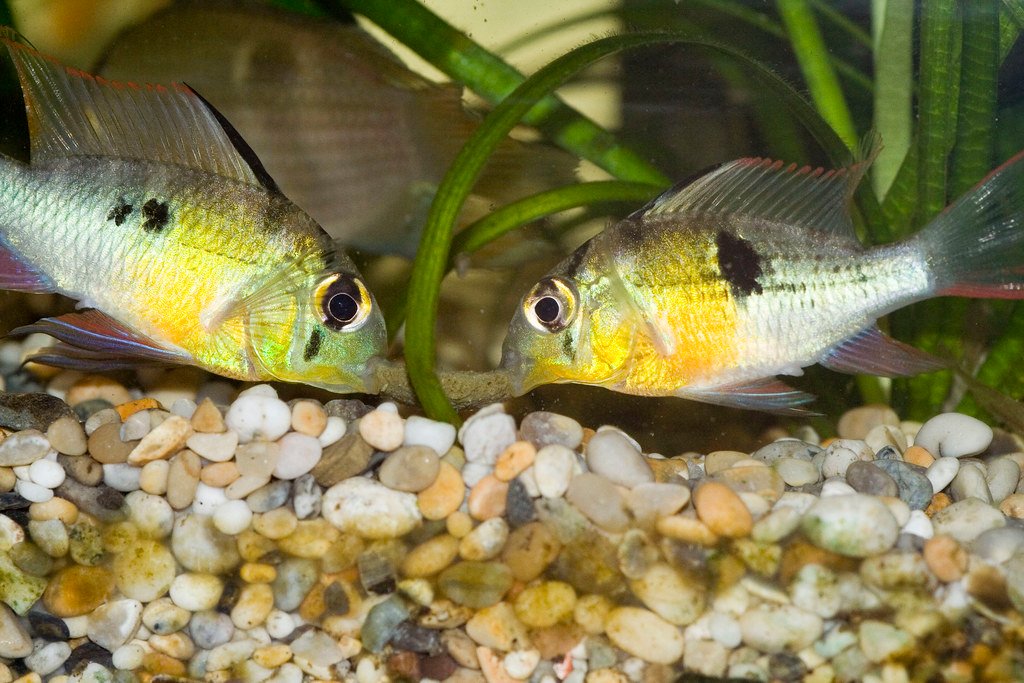
Breeding Bolivian rams is exciting for those who love aquariums. I’ve learned several tips for better breeding with these fish. This advice will help you get great results.
Feeding Regimen
A diverse diet is important for bolivian ram breeding. Include high-protein food like bloodworms, brine shrimp, and mysis shrimp in their meals. This variety gets them ready to breed. Some breeders suggest ‘Spectrum by New Life’, which is great for cichlids ready to spawn.
Water Changes
Changing the water often is a must for breeding success. Try to use slightly cooler water for weekly water changes to mimic their natural habitat. This keeps the water clean and may also encourage them to spawn.
Providing Spawning Sites
Having the right places for them to lay eggs is crucial. Use flat rocks or surfaces to give them options for egg-laying. Also, add a sandy spot for their natural sifting behavior, which helps prepare them for spawning.
| Breeding Parameter | Recommended Range |
|---|---|
| Water Temperature | 75-81°F (23.9-27.2°C) |
| pH Level | 6.0-8.0 |
| Tank Size | 30-40 gallons (113.6-151.4 liters) |
| Breeding Group | 1 male with 2-3 females |
| Typical Egg Count | Up to 200 eggs |
These tips will help you set the stage for successful breeding with Bolivian rams. Remember, being patient and giving consistent care are crucial with these amazing fish.
The Spawning Process
Watching bolivian rams spawn is truly captivating. Their unique actions make the process fascinating. This includes their courtship, egg-laying, and care for their young.
Courtship Rituals
Bolivian rams have complex courtship displays. The males show bright colors and fin movements to impress the females. They often swim together, creating a beautiful dance.
Egg Laying and Fertilization
After pairing up, the female lays up to 300 eggs on a flat surface. The male then fertilizes them. This fertilization process lasts hours. During this time, both parents protect the eggs.
Parental Care
Once the eggs are laid, both parents work together to care for them. They fan the eggs to oxygenate them and remove any that aren’t fertilized. In 36 to 48 hours, the eggs hatch. At first, new parents might accidentally eat some eggs. However, they get better over time.
| Spawning Stage | Duration | Key Behavior |
|---|---|---|
| Courtship | 1-2 days | Fin displays, synchronized swimming |
| Egg Laying | Several hours | Female lays eggs, male fertilizes |
| Egg Care | 36-48 hours | Parents fan eggs, remove unfertilized ones |
| Fry Care | 2 weeks | Parents guard fry, may be removed after |
Caring for Bolivian Ram Eggs
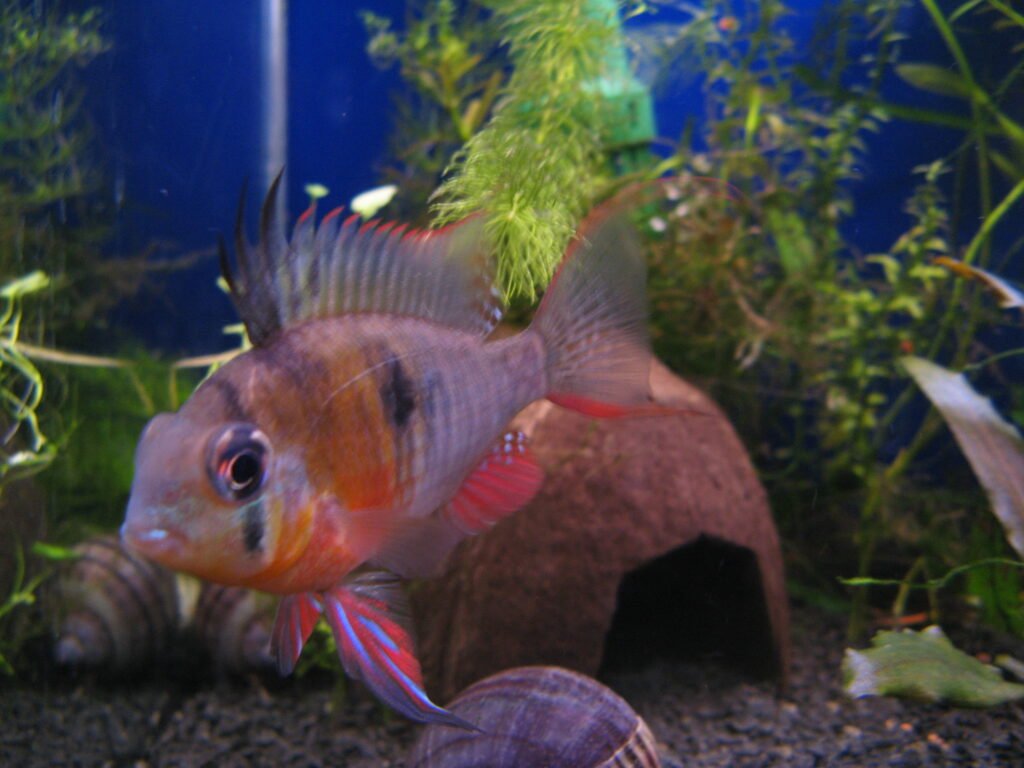
Taking care of Bolivian ram eggs is key to breeding success. Good care boosts the number of eggs and fry that survive. Sometimes, the parent fish might eat their own eggs. This is when we have to use artificial hatching.
Artificial hatching: First, move the eggs to a 10-gallon tank. Add 3-4 inches of water and an air stone for movement. To stop fungus, use a little hydrogen peroxide in the water every 12 hours. Remove any bad eggs quickly.
Here are important tips for Bolivian ram egg care:
- Keep water temperature steady
- Have low lighting in the tank
- Use a treatment to prevent fungus
- Get rid of bad eggs
- Make sure the water is moving gently
Normally, Bolivian ram eggs will hatch in just 2 to 3 days. After about 3 days, the fry start swimming on their own. Keeping the conditions perfect is vital for their life.
| Parameter | Optimal Range |
|---|---|
| Water Temperature | 22-27°C (72-80°F) |
| pH Level | 6.0-7.0 |
| Tank Size | 10 gallons (for hatching) |
| Lighting | Dim |
| Water Circulation | Gentle |
Using these steps has improved my success with breeding. Once, 15 fry made it to adulthood. With attention and care, you can do the same or even better in your breeding project.
Raising Bolivian Ram Fry
Raising Bolivian ram fry can be really interesting but also needs patience. As a breeder, I’ve learned that taking good care of them is key. We’ll go through how to look after these young fish the right way.
First Foods for Fry
Start by giving them microworms for a few days. Then, switch to hatching brine shrimp. I feed them about 4-7 times each day. Hikari First Bites is great for tiny fish. Later on, they can eat flake food and pellets when they’re bigger.
Growth Stages
In the beginning, they grow slowly. Changes happen week by week, not every day. Their size increases step by step:
- 3 weeks: 3/8 inch
- 8 weeks: 5/8 inch
- 5 months: 1 1/8 inches
- 11 months: 1 7/8 inches
- 15 months: 2 1/4 inches
At about 3 months, they grow fast. You start seeing their colors around 5 months. Blue starts to show in their fins at 6 months, and you can tell their gender at this point.
Separating Fry from Parents
It’s crucial to watch how the parents and fry are getting along. Rams are usually good parents. However, if there’s too much fighting, I move the fry when they’re 2-3 weeks old.
| Age | Size | Milestones |
|---|---|---|
| Hatching | 1/16 inch | Free-swimming |
| 2 weeks | Over 1/2 inch | Transition to larger foods |
| 23 weeks | Varies | Ready for sale |
| 6 months | About 1 inch | Gender determination possible |
| 8 months | 1.5 inches | Can start spawning |
| Over 1 year | 2+ inches | Full adult size reached |
Common Challenges in Bolivian Ram Breeding
Breeding Bolivian Rams is a rewarding yet tricky passion. I’ve faced several hurdles with these amazing fish. Here are some common challenges and tips to win over them.
Egg Eating
Egg eating is a common frustration. New parents might swallow their eggs. To outsmart this, giving them lots of hiding places works. Also, make sure their environment feels safe.
Infertility Issues
Infertility can halt breeding success. Issues like inbreeding or imbalances in breed fish can cause it. To solve this, pick Bolivian Rams carefully. Look for reputable breeders or wild-caught fish for better chances.
Water Quality Problems
Good water quality is a must for spawning success. Bad water can mean no babies or weak ones. To avoid this, keep the water just right. Use the table below to set the perfect conditions for breeding:
| Parameter | Optimal Range |
|---|---|
| Temperature | 75-82°F (24-28°C) |
| pH | 6.0-7.5 |
| Hardness | 3-10 dKH |
Addressing challenges and following tips will help you succeed. Keep in mind, success in breeding takes time and effort.
Conclusion
I’ve learned that breeding Bolivian Rams takes a lot of planning and care. A 20-gallon long tank is great for a breeding couple. It should have some plants like wisteria, Amazon sword, and Java moss. The female often takes a big part of the tank as her own.
For spawning, Bolivian Rams lay 40-150 eggs that are reddish-orange every two weeks. Their offspring start swimming freely after about 8 days. In two months, they are about an inch long. It’s important to keep the baby fish with their parents for a few weeks before you move them.
Being responsible when breeding Bolivian Rams is crucial. It’s advised to cull or remove about 75% of the fry. This helps keep the gene pool varied and stops too many fish from entering the market. It also means the fish are healthier when they’re sold. With the right approach and care, breeding these community fish is not just interesting but also fulfilling for fish lovers.
FAQ
What are the ideal water parameters for breeding Bolivian Rams?
What tank size is recommended for breeding Bolivian Rams?
What substrate is best for Bolivian Ram breeding?
How do I recognize Bolivian Ram breeding behavior?
What should I do if the Bolivian Ram parents eat their eggs?
What foods should I feed Bolivian Ram fry?
How can I increase the chances of successful breeding in Bolivian Rams?
References
The South American Cichlid Association (SACA)
The American Cichlid Association (ACA)British Cichlid Association

